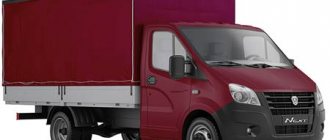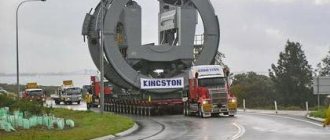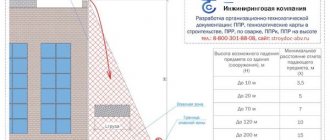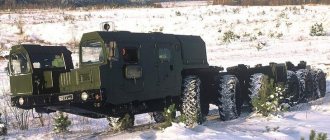The cargo compartment of a car, equipped with a fence from the external environment, is called a van. A cargo van is a structure assembled on the basis of a frame with sheathing or an awning, mounted on a car chassis. Gas, Isuzu, Hyundai, Hino, Fuso, Iveco and other brands are suitable for installation of vans of various sizes, load capacity and purpose. For example, on the Iveco DAILY 35С15 chassis you can install a manufactured goods, isothermal or universal van with a capacity of 4.5 tons
cargo about
4 m
and up to
2.5 m
.
The main problem when choosing a cargo van remains the search for the optimal ratio of size, load capacity and use profile. In this article we provide a description of the types of cargo vans by type, size and purpose.
Important!
Transporting people in a cargo van or compartment not intended for passengers is prohibited by traffic regulations.
Violation of this prohibition is subject to a fine under Art. 12.23 Code of Administrative Offenses of the Russian Federation. The fine for a driver for transporting people in a cargo van
is 500 rubles. An official or legal entity, for example, an individual entrepreneur, may be subject to a fine of up to 10 thousand rubles. Paragraphs 22.1 - 22.8 of the traffic rules prohibit the transportation of people in a truck van that is not equipped with passenger seats (outside the cab).
Order a free consultation on choosing a van
Dimensions and tonnage of cargo vans
This is the hardest part for a potential buyer. The size of cargo vans and the ability to accommodate tons of cargo are directly related. The dimensions of the van are limited due to the design features of the vehicles and traffic regulations. We present the most visual and understandable option for choosing a van based on size and capacity.
It is impossible to indicate the exact dimensions of the vans in relation to the carrying capacity. Different chassis options, van designs, insulation and installed equipment affect the dimensions. We suggest contacting our specialists to get as much information as possible and order the production of a cargo van with the dimensions most convenient for you.
Dimensions of trucks
Movement method
Rail vehicles are mechanisms that move along specially equipped guides. They can be of the following types:
- ordinary;
- narrow gauge;
- universal;
- monorails;
- combined.
These include trains, steam locomotives, diesel locomotives, motor cars, electric locomotives, handcars, trams and subway vehicles.
Trackless vehicles are all types of land vehicles that move on a solid surface without the use of rails.
Registration of a vehicle
This procedure is necessary immediately after the car has an owner. The permitted period for vehicle registration is 10 days from the date of purchase. When contacting the traffic police, you must provide the following documents:
- Statement.
- Passport confirming the place of registration of the owner.
- PTS.
- Ownership document.
- Insurance policy.
- Receipt for payment of state duty.
Registration is carried out in three stages:
- Submission of documents.
- Inspection of equipment by a traffic police officer.
- Obtaining a vehicle registration certificate.
Motorists who want to save money can submit documents through the government services portal. In this case, it is proposed to undergo a technical inspection in advance and pay the state fee with a 30 percent discount.
If the owner violates the ten-day period for registering a vehicle established by law, he faces a fine ranging from 1,500 to 10,000 rubles. Repeated detection will lead not only to financial losses, but to deprivation of the right to drive a vehicle for up to three months.
Concept
A vehicle (VV) is a technical device or product that is used to transport people or goods over long distances. This means that lifting mechanisms that move an object several meters cannot be called such.
Vehicles include not only cars equipped with engines, but also sea and river vessels. Surprisingly, a device that moves an animal (horse, mule, dog), another mechanism or a person can also be called a vehicle.
Classification
While decoding the abbreviation TS is quite simple, not everyone can understand the types of devices. For those who are interested in learning something new, let us explain that there are several classification criteria.
Vehicles are divided into several groups:
- According to the method of movement: rail and trackless.
- According to the presence of mechanics: mechanical and non-mechanical.
- Purpose: passenger and cargo.
- By type of travel: self-propelled and non-self-propelled.
- By categories (and subcategories) A (A1), B (B1), C (C1), D (D1), BE, CE, C1E, D1E, DE, Tm, Tb, M.











